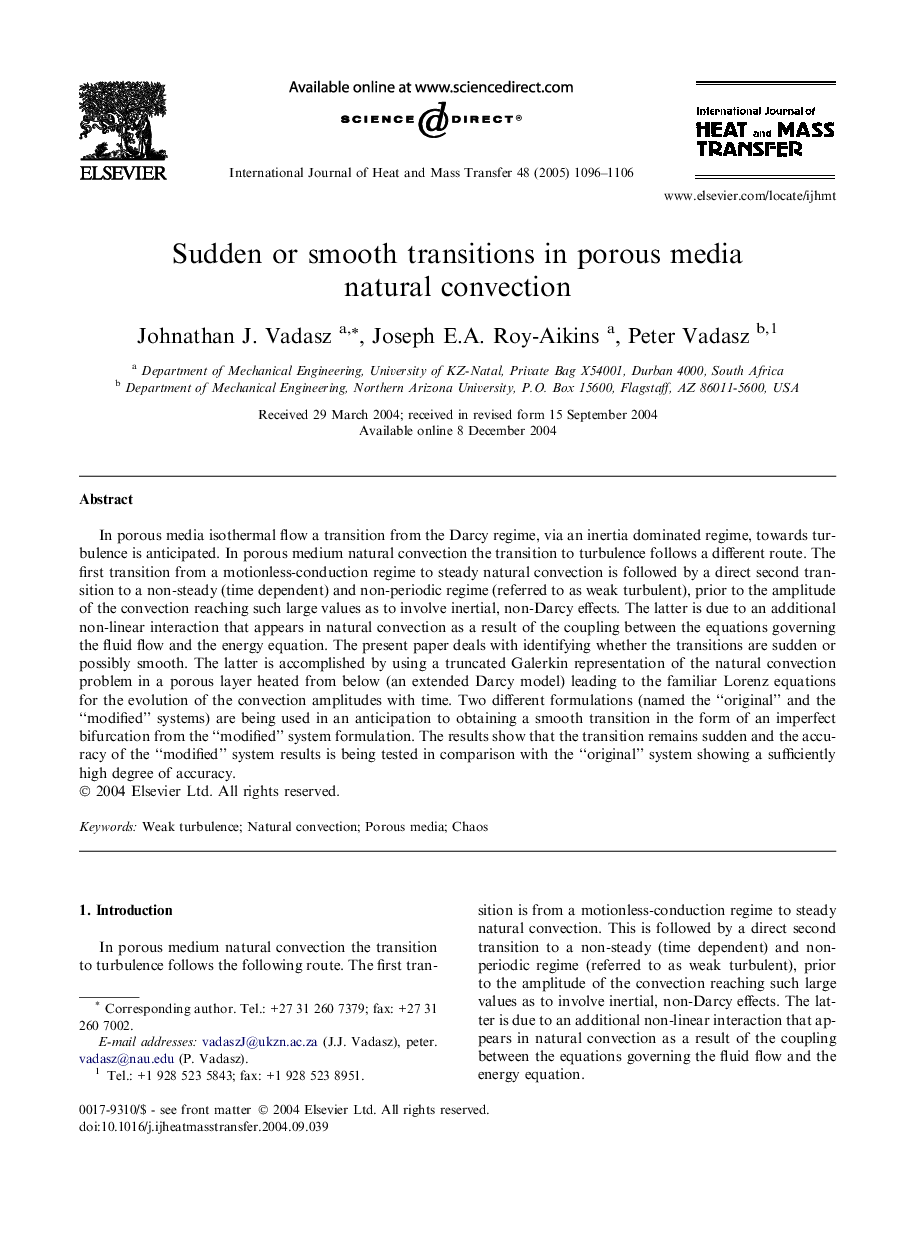| Article ID | Journal | Published Year | Pages | File Type |
|---|---|---|---|---|
| 9691625 | International Journal of Heat and Mass Transfer | 2005 | 11 Pages |
Abstract
In porous media isothermal flow a transition from the Darcy regime, via an inertia dominated regime, towards turbulence is anticipated. In porous medium natural convection the transition to turbulence follows a different route. The first transition from a motionless-conduction regime to steady natural convection is followed by a direct second transition to a non-steady (time dependent) and non-periodic regime (referred to as weak turbulent), prior to the amplitude of the convection reaching such large values as to involve inertial, non-Darcy effects. The latter is due to an additional non-linear interaction that appears in natural convection as a result of the coupling between the equations governing the fluid flow and the energy equation. The present paper deals with identifying whether the transitions are sudden or possibly smooth. The latter is accomplished by using a truncated Galerkin representation of the natural convection problem in a porous layer heated from below (an extended Darcy model) leading to the familiar Lorenz equations for the evolution of the convection amplitudes with time. Two different formulations (named the “original” and the “modified” systems) are being used in an anticipation to obtaining a smooth transition in the form of an imperfect bifurcation from the “modified” system formulation. The results show that the transition remains sudden and the accuracy of the “modified” system results is being tested in comparison with the “original” system showing a sufficiently high degree of accuracy.
Related Topics
Physical Sciences and Engineering
Chemical Engineering
Fluid Flow and Transfer Processes
Authors
Johnathan J. Vadasz, Joseph E.A. Roy-Aikins, Peter Vadasz,
